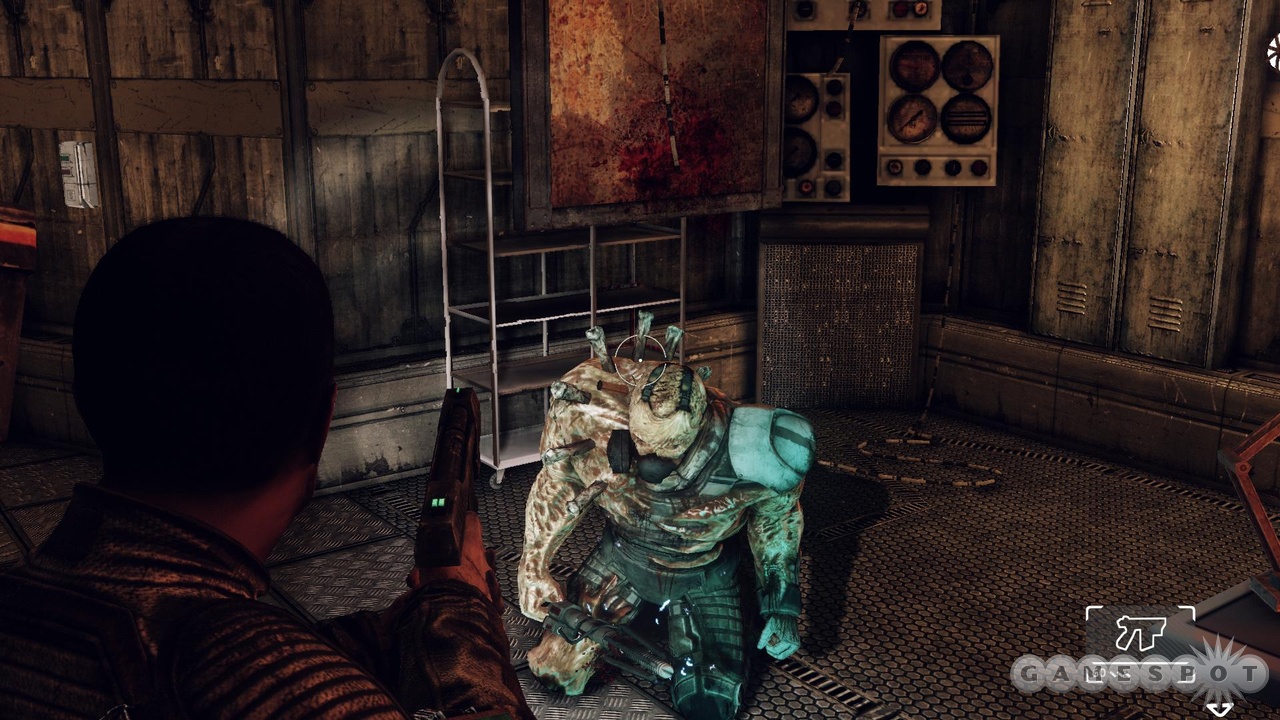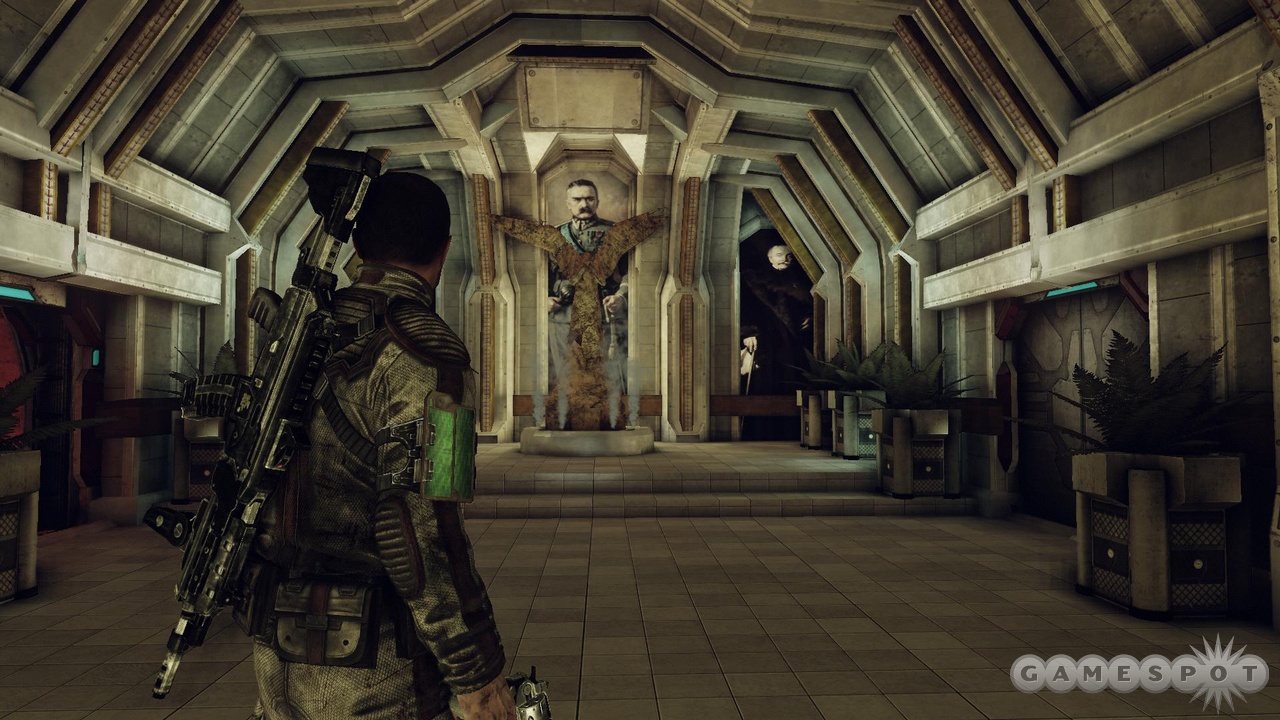Imagine being trapped in a fallout shelter after a nuclear bomb transforms the outside world into an unrecognizable wasteland. The tight community of survivors is clawing at the walls to break free, desperate to return to the happier times that everyone still so clearly remembers. In this claustrophobic state, people's sanity begins to slowly unravel. Now imagine being the psychiatrist who has to listen to everyone's problems, day in and day out, until your own thoughts have been tainted by the crazed mutterings of everyone around you. Afterfall: Insanity uses this bleak setup to draw you into this world--to feel the prisonlike restrictions of your domicile--and makes you want to see how this haunted tale plays out. Sadly, the act of playing is rife with problems. Tedious combat serves as your main means of interaction, and the early going is so linear and trite that it's easy to lose focus. But Afterfall: Insanity provides enough atmospheric touches to make it worth pushing through the multitude of problems.
Dr. Tokaj has had trouble sleeping. His clouded thoughts circle through his mind in a continuous loop, forcing him to dwell on the twisted ideas being spouted by his utterly hopeless patients. One day, he falls asleep in the middle of a session, only to be rudely awakened when he is caught with his eyes closed. This scene happens minutes into the game, and at this point, there is so little characterization of the world that it's hard to care about the good doctor's problems. And when he's confronted by armed guards intent on apprehending him for an unnamed crime, you play because the game tells you to play, not because you have an emotional investment. It's a rough start to this postapocalyptic adventure, and the stilted voice acting fails to engender much enthusiasm.
In the early moments of Afterfall: Insanity, the most notable aspect is the uneven attention given to the characters and action. With perfunctory introductions, it's hard to care about anyone you meet, and the controls are so clumsy that you get stuck on every corner as you walk through the blinding-white halls. However, if you stick with Afterfall beyond the woeful early moments, you begin to appreciate the subtle touches that bring this horrible world to life. Dr. Tokaj has a troubled relationship with his superior, and when the protagonist is sent on a deadly mission, their back-and-forth tension makes you appreciate how strict and limiting life is under the surface. When an outbreak begins to mutate the residents into horrible beasts, you begin the hunt for the culprit, and the flashes of ghostly apparitions that momentarily haunt you make you press on to see what secrets this game hides. Afterfall: Insanity makes good use of lighting, along with its slowly unraveling story and creepy sound design, to immerse you in its world.

But for all the good the atmospheric touches do to bring you into this world, the combat continually hinders your enjoyment. When you're first introduced to fighting, it's in a hand-to-hand battle, and it's so shallow that you might assume it expands into something more exciting as you come to grips with the basics. Sadly, this is not the case. There are makeshift weapons strewn about the environments, including fire axes, pipes, and buzz saws, and though they have slightly different attributes, they all handle pretty much the same. You block with one button, attack with another, and roll out of the way if you feel like showcasing your athletic side. Standing still with the block button held is a winning tactic, and you can just tap away with an offensive strike when your enemy tires himself out. The only interesting aspect of the unimaginative melee lies in the finishing moves you perform, though these tie into the story rather than make for exciting gameplay opportunities. Seeing Tokaj savagely stomp on an attacker's head makes you appreciate how far from stable he is, so performing these instant kills does illuminate certain dark parts of his mind.
The most excruciating aspect of the melee is that fights drags on for minutes at a time. Thankfully, this issue is alleviated once you gain access to firearms. It takes only a few shots to kill even the most difficult enemies, so guns allow you to virtually bypass the least interesting element of Afterfall and focus on the good points. Bullets are strewn liberally throughout the environments, so you rarely have to press forward with only a meager melee weapon in tow. Despite the archaic combat, there are a few interesting sequences that force you to attack with thought and precision. There are three powerful bosses, and the first two require deft movement as you scan your massive foes for weak points. Clunky controls make circling these beasts tricky, but there is joy in figuring what needs to be done and performing it with valor.
Afterfall: Insanity is broken up in three distinct acts that take place in drastically different locations. For the first third of the game, you wander around the sublevels of your dreary home. Flickering lights and murmuring shadows keep you on edge, but the linear structure makes this early portion drag. Tight corridors shuffle you from one objective to the next, and the lame combat fails to add much excitement to the bland proceedings. However, once you find your way to the next area, things become a lot more interesting. Environmental puzzles block your path, and figuring out how to move on requires a minute or two of thought. You may have to trigger an explosion to cause a truck to burst through a wall or find your way out of a seemingly locked room, and there's enough challenge to keep you invested without frustrating you as you search for the answer.

The final act of Afterfall is the most interesting. Certain parts of the level cause sudden death, so you have to create makeshift paths using environmental pieces. It's sometimes unclear exactly where you need to go, and poor collision detection means you can die unexpectedly, but it's still a rush to figure out what you need to do to progress. There are also more conventional puzzles that break up the normal action. These involve manipulating computers, and you can usually rely on trial and error to proceed, but they're a welcome change of pace despite their simplicity. Quick-time events enliven the mood as well. These only appear a handful of times and usually have thrilling action set pieces in the background, so these brief diversions are usually exciting.
There's no doubt that Afterfall: Insanity does a number of things well, but it's impossible to ignore the lesser elements. Combat is simply not at all interesting, and yet, you spend most of the game shooting, dismembering, and otherwise engaging attackers. The early portions are so uninspired and the story starts so slowly that it's easy to move on to another game and never look back. But the longer you play Afterfall, the more appealing it becomes, and the steady climb to respectability makes you glad you stayed with it. Afterfall: Insanity is an uneven adventure, but it's worth putting up with its problems to discover the good portions hidden below the surface.



